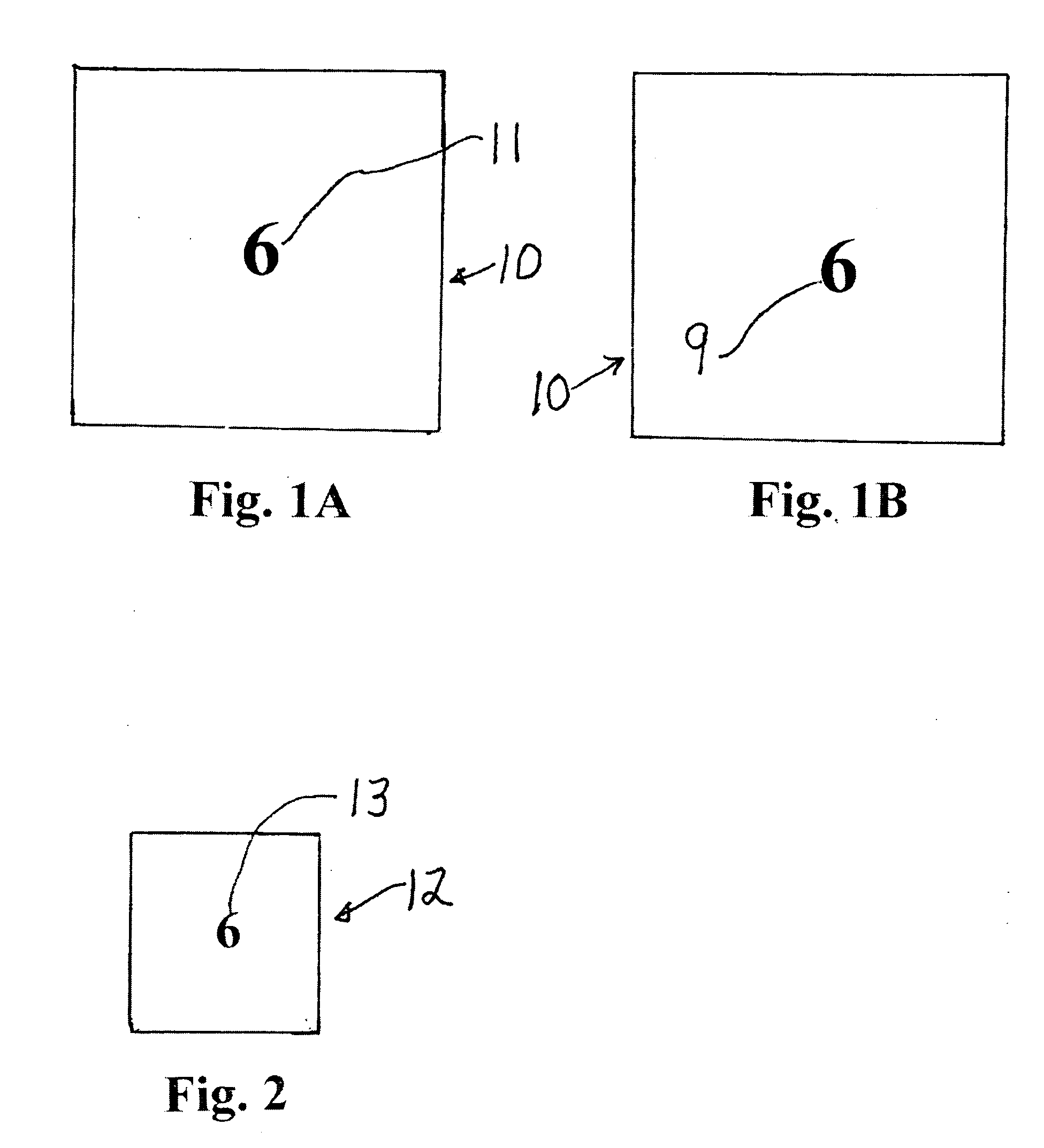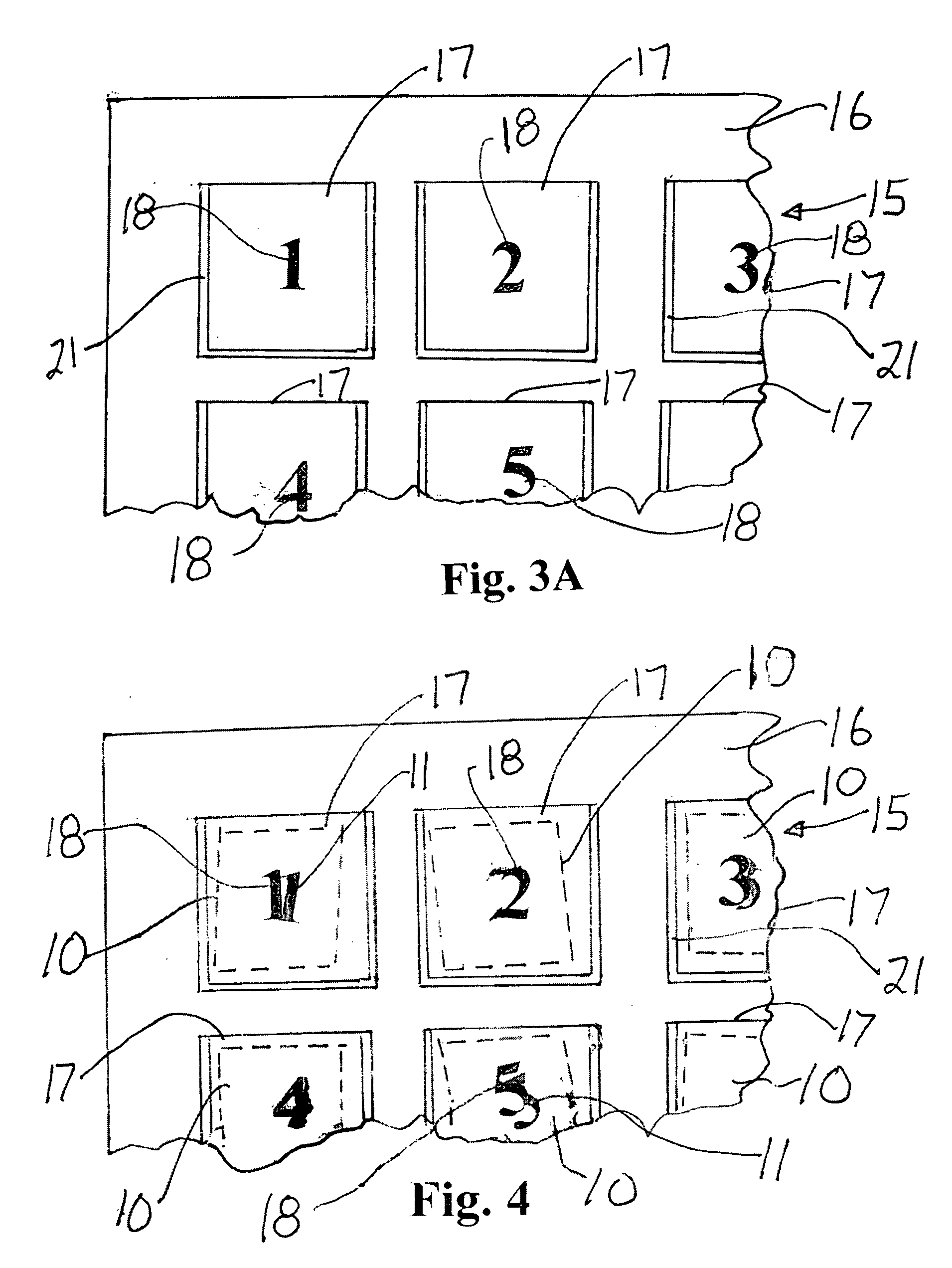Surgical pad accounting system and method
- Summary
- Abstract
- Description
- Claims
- Application Information
AI Technical Summary
Benefits of technology
Problems solved by technology
Method used
Image
Examples
Embodiment Construction
[0029]The present invention relates to improving the safety of patients during surgical operations. The term, as used herein, of “surgical pads” refers to absorbent pads used in a surgical procedure to absorb blood or other fluids. One type of surgical pad is a sterile gauze pad called a “lap pad” or “laparodermy pad” which typically is 4 or 16 inches long by 16 inches wide. Another type of surgical pad is a surgical sponge which typically is of sterile gauze and may be 2 inches square in size.
[0030]As shown in FIG. 1A, the lap pad 10 of the present invention is of the same size and construction as presently used lap pads. However, there is printed on its top face surface, or on both its top and bottom face surfaces as shown in FIG. 1B, a human readable alphanumeric character 11, or 11 and 9, respectively. Preferably each of the alphanumeric characters 9 and / or 11 are one of a series of consecutive number, for example 1,2,3 . . . 10. Each pad in a container (package) has a different...
PUM
 Login to View More
Login to View More Abstract
Description
Claims
Application Information
 Login to View More
Login to View More - R&D
- Intellectual Property
- Life Sciences
- Materials
- Tech Scout
- Unparalleled Data Quality
- Higher Quality Content
- 60% Fewer Hallucinations
Browse by: Latest US Patents, China's latest patents, Technical Efficacy Thesaurus, Application Domain, Technology Topic, Popular Technical Reports.
© 2025 PatSnap. All rights reserved.Legal|Privacy policy|Modern Slavery Act Transparency Statement|Sitemap|About US| Contact US: help@patsnap.com



